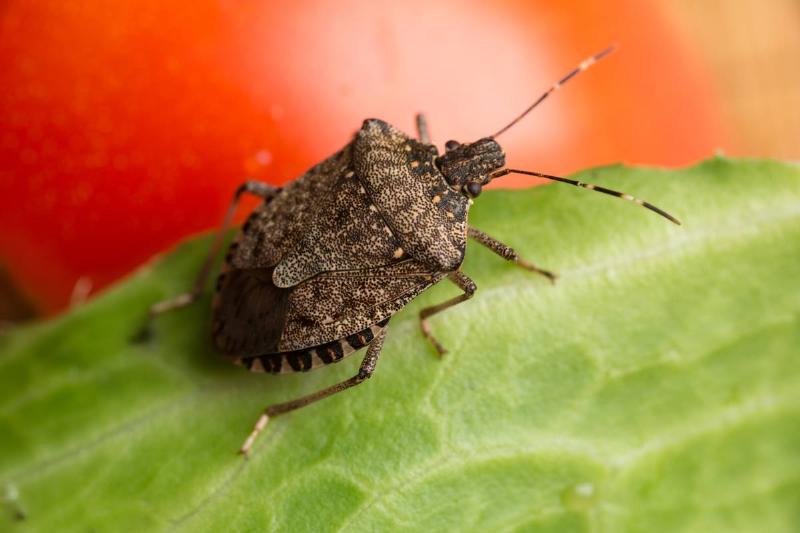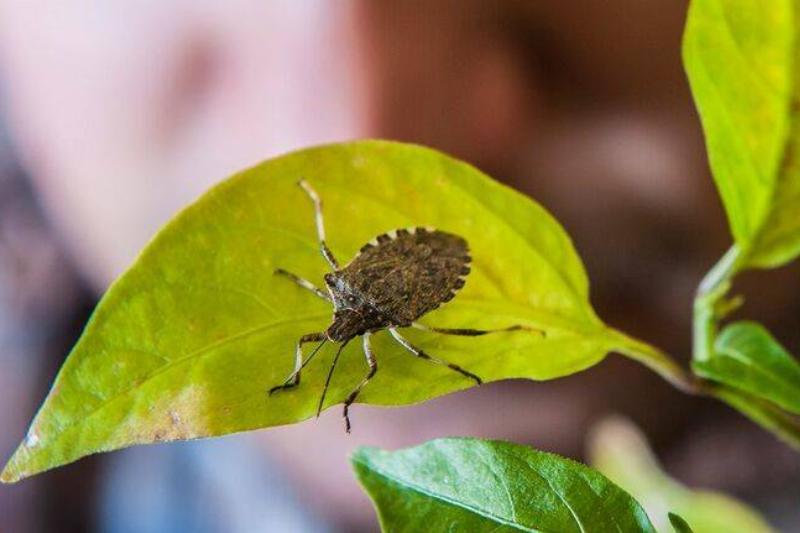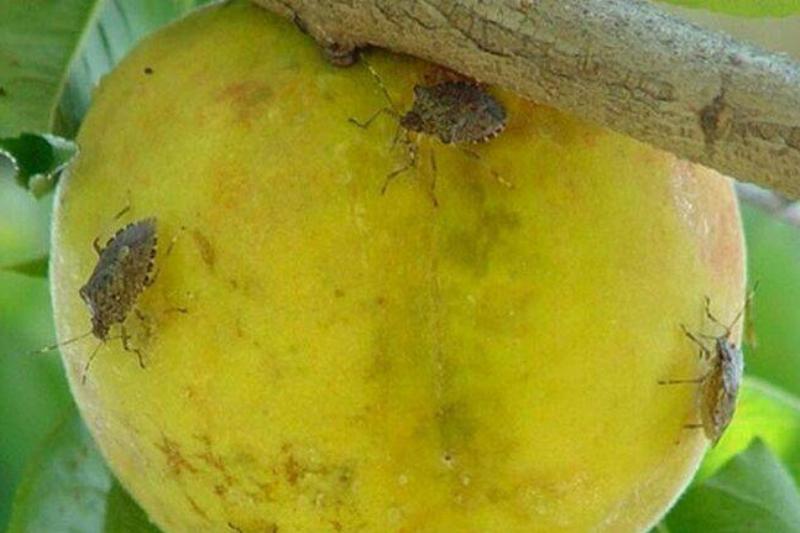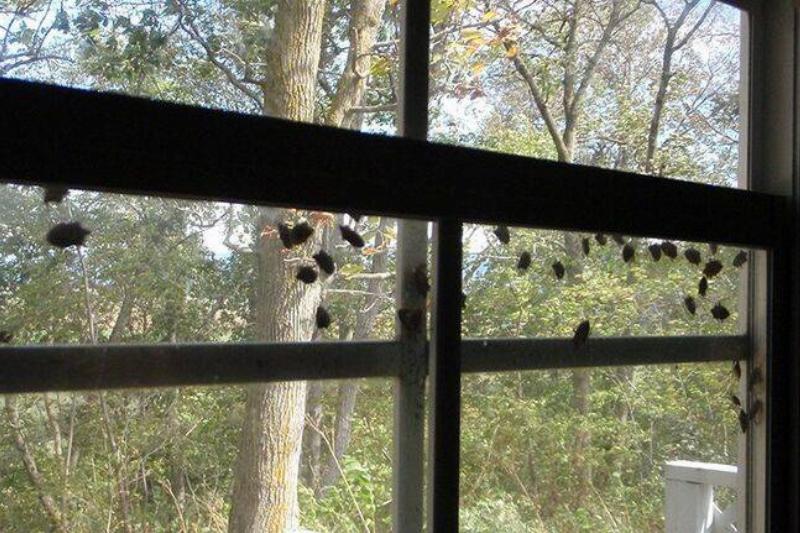Tiny Brown Bug
It can be difficult to see bugs, especially the small ones that are good at burrowing in flowers or blending in with nearby trees. These bugs are small and brown, which means they do a great job with camouflaging in their surroundings. That’s what you should be careful of!

Tiny Brown Bug
Shield-Like Body
Those in the know suggest that you watch your surroundings while you’re outside, for these little critters could be hiding in your backyard. The six-legged bug has a body that resembles a medieval shield. When it is fully grown, it measures 0.7 inches long.

Shield Like Body
Small But Not Necessarily Harmless
The small brown bugs can cause a lot of destruction despite their tiny stature. This is why experts want people to be extra careful and vigilant. Not only can they crawl into your house, they also have wings and can fly into your home.

Small But Not Necessarily Harmless
Find Ways Into Homes
These wings are pretty powerful as well. The bugs can fly into homes though windows, cracks in walls, and curtains. This is why people have to be very careful if they do see these bugs in or around their homes and yards.

Find Ways Into Homes
Brown Marmorated Stink Bug
So what are these bugs? They’re called Halyomorpha halys or the brown marmorated stink bug, which is a truly descriptive name for a bug that can cause a lot of damage if homes and gardens become infested.

Brown Marmorated Stink Bug
Accidentally Introduced in 1998 to the USA
These bugs are native to China, Japan, and Korea. They were accidentally introduced to the United States in 1998 when scientists believe that they were brought over and first seen in Allentown, Pennsylvania. They became a big problem throughout the eastern part of the country.

Accidentally Introduced In 1998 To The USA
How the Bug Traveled by Max Barclay
Max Barclay works at the National History Museum for the Coleoptera collection, and he has a theory about the origins of the bug ad well as how the bugs spread to many countries. He believes that the first bug made its way to the UK.

How The Bug Traveled By Max Barclay
Predicted Another Arrival in 2014
In 2014, Barclay believes that the brown marmorated stink bug would make its way from the east towards Britain, and this actually happened. The bugs were seen in the Natural History Museum gardens in 2020.

Predicted Another Arrival In 2014
Packaging, Pallets, and Shipping Crates
The news that these bugs made their arrival is never good, as it is quite difficult to get rid of them once they do. They head indoors during winter, which means that they can burrow themselves in shipping crates, pallets, and other types of packaging.

Packaging, Pallets, And Shipping Crates
Thrive in Warm Weather
Since these bugs don’t do very well in cold climates, they look for warmth and that’s why they nestle into shipping crates. They then go in diapause, or a winter sleep, until the weather warms up. That’s when they come out and truly thrive.

Thrive In Warm Weather
Climate Change Helps Stink Bugs Invade
These bugs will continue to become more and more of a concern if the issues caused by climate change aren’t resolved. According to research published in the International Biometeorology Journal, a prediction was made that the bugs would reach Switzerland in the 2010s and get settled there.

Climate Change Helps Stink Bugs Invade
Hitched a Ride to Switzerland
It turns out that the prediction in the research was correct. Due to the bugs’ invasion, there was significant crop damage and an increase in stink bug population numbers beginning in 2017 and on. This also contributes to increased temperatures.

Hitched A Ride To Switzerland
Bad News for Swiss People
Dr. Tim Haye, who works at the Swiss CABI Centre, believes that there’s strong evidence that shows that certain species are changing due to climate change. Non-native species will continue to make new places their homes, and warmer weather will continue to make it easier for these invasive species to move around and cause damage.

Bad News For Swiss People
Not Safe at High Altitudes
Dr. Haye detailed where he believes the stink bugs will continue to infest. He believes they will continue moving south and towards the Alps. He says that there, the higher altitudes might continue becoming suitable for them as the climate continues to change.

Not Safe At High Altitudes
Infestations of 1,000s
His paper suggests that it’s just a matter of time before the stink bug population continues to grow into an uncontrollable number. This is why it’s so important to keep an eye out for these bugs in your backyard. This is the best way to avoid infestations that turn into thousands of bugs.

Infestations Of 1,000s
Pennsylvania to North Carolina
These bugs were not seen in the United States until 1998. They moved from Pennsylvania towards New Jersey and by 2004, they had reached Virginia. They were most recently seen in North Carolina. However, that’s not all…

Pennsylvania To North Carolina
44 States and 25 Years Later
Sadly, these bugs have also spread to other parts of the country. They continued to spread from the east and have managed to infest 44 states in the country. It took 25 years for the bugs to make it to nearly the entire country.

44 States And 25 Years Later
Almonds or Cilantro
A lot of people identify the bugs by their smell, which some say is similar to cilantro, while others say is more similar to almonds. If you smell either one of these and you’re not growing them in your garden, make sure you check out the situation.

Almonds Or Cilantro
Can’t Wipe Them Out
There is no way to get rid of this invasive species, but they can be contained. According to Barclay, stink bugs can establish themselves very quickly. If you see one or two of them, chances are, there are already a lot more out there as well.

Can’t Wipe Them Out
Contain the Pest
Although there is not currently a long term solution for getting rid of stink bugs, there are ways to contain and control the situation. If you do notice these shield-like bugs around, here’s what you can do.

Contain The Pest
Remove Weeds and Obstructions
Your first step will be to immediately remove the weeds from your garden, since the stink bugs will try to hide amongst them and camouflage. They can also hide under and around lawn ornaments, so make sure to check those as well.

Remove Weeds And Obstructions
Homemade Repellent
If removing weeds doesn’t help, you can try using a homemade bug repellant. Kaolin clay solution along with a few gallons of water and 15 ml of dish soap mixed together and placed in a spray bottle can help. Just spray all over the place and see how effective it can be.

Homemade Repellent
Harmless to Plants
Stink bugs won’t eat crops or get near things that have been sprayed with this solution. It also helps prevent them from laying their eggs as well. The best part is the spray is not harmful to crops. However, it’s still important to wash any crops that have been sprayed before eating them.

Harmless To Plants
Trap Plants
Stink jobs are attracted to yellow flowers, namely sunflowers. You can use these yellow flowers as a natural trap. While they don’t act like Venus Flytraps, you can use them as a natural guide to move the bugs away from your garden and crops.

Trap Plants
Plant the Trap Away from Others
In order to do this, you can plant yellow flowers in an area that’s far away from your garden and crops, so that the bugs will be directed away from your plants. Next, you can spray the area with the yellow flowers to minimize them even more.

Plant The Trap Away From Others
Dispose of the Trap Plant
Once you notice the bugs congregating around the yellow trap plants, you have a few ways you can deal with them. The first is to rely on the birds and other animals to kill them, though this is definitely a slower way to deal with the issue.

Dispose Of The Trap Plant
Dig the Plant and Put It in Plastic
Your other option is to try to gather the stink bugs around the trap plant and then dig up the flower, place it in a garbage bag and close the bag tightly. Then you can leave it in the sun and wait for the heat to kill the bugs.

Dig The Plant And Put It In Plastic
They Love Vegetables and Fruit
Though they’re called stink bugs, their smell is not the most concerning thing they can do. They go straight for vegetables and fruits and can truly eradicate full sets of crops if not dealt with immediately.

They Love Vegetables And Fruit
Ruined $40 Million Apples
In 2010, farmers lost around $40 million worth of apples because of a stink bug infestation that got out of control. They left brown stains in the apples. They also like grapes, which can ruin vineyards in no time.

Ruined $40 Million Apples
Sealants for the House
In order to protect your house, you need to take a different approach. Make sure that every nook and cranny and crevice is sealed with proper sealant. This way, the stink bugs can’t creep their way in and infest your home.

Sealants For The House
Use Your Vacuum Cleaner
However, sometimes the sealant isn’t enough and the stink bugs find their way into your home. If that does happen, don’t panic. Make sure you vacuum up the bugs you see, and make sure that you throw out the bag to avoid the smell taking over your home.

Use Your Vacuum Cleaner
Turn Out the Lights
Stink bugs are attracted to lights, so try to use minimal outdoor lighting. In the evening, turn off any porch lights and pull your blinds down so that the light from inside doesn’t spill out.

Turn Out The Lights
Reduce Moisture
Any moisture build up should be reduced, since often bugs are attracted to moist environments. Stink bugs often look for sources of water, so make sure to check leaking pipes and clogged drains.

Reduce Moisture
Eliminate Their Food Source
In order to prevent stink bugs from getting into food, make sure everything is stored in airtight containers. Ensure that lids are on trash cans and toss out the trash often. Make sure it is thrown out in a sealed receptacle outside too. Keep floors and counters clean.

Eliminate Their Food Source
Check Your Belongings
When you buy items that come in boxes, make sure to inspect them thoroughly. That means checking grocery bags, holiday decor boxes that have been sitting in storage, and anything that comes in a box or a crate, especially from any online shopping.

Check Your Belongings
Try Not to Smash Them
It can be tempting to squash any of these pests if you find them around your home, but try to avoid doing this, since this will released their odor. It’s better to vacuum them up in order to avoid the smell from being released.

Try Not To Smash Them
Landscape Properly
Keep any branches and shrubbery trimmed properly and if you use firewood, keep it raised 5 inches off the ground and 20 feet or more away from the house.

Landscape Properly
Ventilate
Make sure that any garages, crawl spaces, attics, and basements are ventilated properly in order to reduce the chances of the pests harboring in there. You can keep a dehumidifier there as well and install screens in chimney vents and attics.

Ventilate
Use Inside Traps
If you find stink bugs in your home, you can trap them indoors as well. Fill up a spray bottle with 2 cups of water mixed with 1/2 cup of dish soap and a cup of vinegar. Spray the bugs directly, as the mixture will kill them without having them emit their smell.

Use Inside Traps
Watch For This Insect
Whether you use home made sprays, weeding your garden, or trap plants, make sure you deal with these bugs swiftly if and when you do see them. Make sure to keep and eye out for these pests before you find yourself with an infestation issue.

Watch For This Insect


